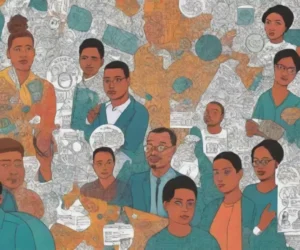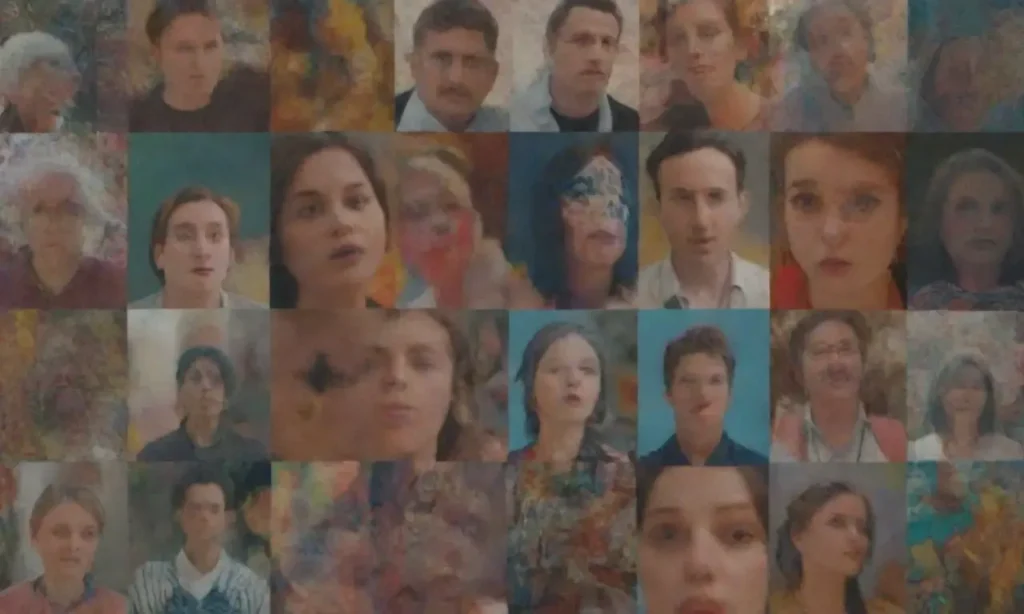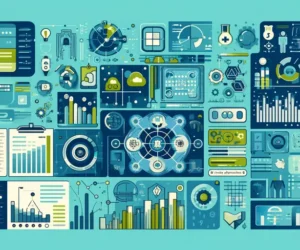
Interactivity in AI Art: Engaging Audiences with Machine Learning

Introduction
In recent years, Artificial Intelligence (AI) has emerged as a transformative force across various creative domains, fundamentally altering how we approach art and interactivity. The integration of machine learning algorithms into artistic processes enables the systematic exploration of limitless creative possibilities, reshaping traditional art narratives while simultaneously raising questions about authorship, creativity, and the role of technology in artistic expression. AI art represents a fusion of human creativity and machine intelligence, providing not just tools for creation but new means of audience interaction that engage viewers in unprecedented ways.
This article delves into the concept of interactivity in AI art, exploring how machine learning technologies are employed to create dynamic and participatory art forms. We will discuss the various methods and tools utilized in creating interactive AI artworks, the implications this has for audience engagement, the collaborative potential between artists and machines, and how institutions and exhibitions are adapting to these new forms of expression. Through a comprehensive exploration of these facets, readers will gain an understanding of the evolving landscape of interactive AI art and its significance in contemporary culture.
The Role of Interactivity in Traditional Art
In traditional art, interactivity often refers to the ways in which viewers engage with a piece, but it usually stems from a passive observation standpoint. Viewers are typically limited to experiencing the work firsthand, relying on individual interpretation and emotional reaction. However, the evolution of art has introduced various forms of participatory engagement, where audiences can influence or co-create the art experience, blurring the boundaries between the creator and the observer.
Interactive art traditionally includes mediums such as installations or performances where audience participation can shape the experience. For instance, installation art may invite viewers to move through or around the artwork, where their presence alters the context, providing a sense of engagement that is more dynamic than mere observation. The growing interest in interactive experiences has prompted artists to explore new ways to engage audiences, including the use of emerging technologies to enhance participation and connection with their work.
AI-Powered Animation: Breathing Life into Digital CharactersThe shift towards interactive approaches in traditional art forms laid the groundwork for integrating modern technologies like AI into the creative process. Artists began to realize that they could leverage people's input, bodily movements, or even digital interactions to redefine how art was created and experienced. This evolution aligns seamlessly with contemporary audiences' expectations, who increasingly seek immersive and interactive experiences that resonate with the digital age. With the advent of machine learning and AI-generated art, the potential for deeper audience engagement has expanded dramatically, enabling a more profound dialogue between the art, the artist, and the viewer.
The Intersection of AI and Interactivity
Machine learning technologies have profoundly transformed the creative landscape, particularly within the realm of AI art. Unlike traditional mechanisms in art production, where artists have entirely predetermined their outputs, AI allows for generative processes—where artists program algorithms to evolve, adapt, and respond to inputs, creating an artwork that is not only unique but can be influenced by its audience. This symbiotic relationship where the artist and their machine collaborate opens up new forms of interactivity.
One significant advantage of using AI in art is its capacity for adaptability. In contrast to static traditional art pieces, interactive AI artworks can change based on user interactions. For instance, an AI artwork might analyze viewers' facial expressions, movements, or even conversations, adjusting its aesthetic output accordingly. As a result, every interaction creates a different experience, inviting viewers to participate actively in each engagement. This also fosters a form of collaboration, as the audience becomes co-creators, providing their inputs that shape the final output.
Furthermore, the use of data in AI art can lead to innovative explorations and representations of emotions, ideas, or themes present in human experience. AI models, trained on extensive datasets, can analyze existing visual motifs, trends, and concepts to generate new interpretations based on stimuli from audience interactions. Whether it's through their textual descriptions, digital gestures, or even other forms of media they avail, the audience's participation fuels the evolving narrative of the artwork. This transformative encounter not only entertains but inspires a dialogue about how technology influences our understanding of creativity and expression.
Personalizing Art Creation: Algorithms Tailoring to Individual PreferencesCase Studies: Engaging Audiences through AI Art

To illustrate the impact of interactivity in AI art, let’s examine a few notable case studies that exemplify how artists and technologists collaborate to bring audiences into the artistic commentary.
Refik Anadol's "Archive Dreaming"
Refik Anadol is known for his innovative approaches combining AI, architecture, and immersive storytelling. His project, "Archive Dreaming," creates a stunning visualization of the Los Angeles County Museum of Art's (LACMA) archives. Anadol's installation invites visitors to engage with the museum's digital data through a continuously evolving visual narrative powered by machine learning algorithms. As audiences interact with the installation, the AI curates and generates new visual representations based on their input and presence.
This interactive aspect transforms the museum experience, allowing visitors to feel more connected to the art and the historical context from which it emerges. By enabling a dialogue between the viewer and the machine, Anadol’s work highlights the relationship between our collective memory and the potential of AI in reimagining how we experience art.
Crafting Visual Narratives: Machine Learning for Storytelling Through Art"AICAN" – The AI Artist
Artificial Intelligence Collaborative Software, or “AICAN,” is another fascinating example of interactivity in AI art. Created by Ahmed Elgammal, a computer scientist at Rutgers University, AICAN is an AI algorithm designed to create original pieces of art based on its training. What sets AICAN apart is its ability to engage audiences directly; it can analyze feedback on its artwork in real-time and generate future works based on this interaction.
In gallery exhibitions, viewers can provide input regarding their preferences, which AICAN uses to evolve its artistic style and themes. As such, the audience's reactions and decisions become part of the creative process, making every exhibition a unique experience. This level of interactivity solidifies the role of the audience not just as viewers but as active participants in shaping the cultural narrative.
The Future of Interactive AI Art
As technology advances, the future of interactive AI art promises exciting developments that will continue to enhance audience engagement. With the advent of Virtual Reality (VR) and Augmented Reality (AR), artists now have tools that can further amplify interactivity, facilitating deeply immersive experiences that transport users into alternate realities. These technologies allow for a multi-sensory engagement, combining visuals, sounds, and even tactile sensations, thus pushing the boundaries of how audiences experience art.
Moreover, the rise of social media and digital platforms specifically designed for sharing and curating interactive traditional and AI artwork opens new avenues for collaboration and feedback. Artists can create online exhibitions where users can adapt, remix, or respond to AI-generated works, further erasing boundaries between creators and audiences. This interconnectedness in the digital realm nurtures a community where creativity thrives, leaving room for discussion and innovation.
Unleashing Creativity: How Machine Learning Algorithms Transform ArtThe increased accessibility of AI technology through user-friendly tools and platforms also has the potential to democratize art creation. Non-artists can experiment with AI algorithms, exploring their own creativity and sharing their interpretations, thus fostering an inclusive environment where diverse voices can flourish. This movement encourages an ongoing conversation about the implications of AI on art and creativity, provoking inquiries into what it means to be a creator in a machine-assisted era.
Conclusion
The intersection of AI and interactivity reflects a significant shift in how we perceive and engage with art today. Through machine learning, artists can create dynamic experiences that allow audiences to become integral components of the artwork, challenging the distinctions between creator and observer. The possibilities that arise from this synergy open up new artistic avenues that explore collaboration, emotion, and the constantly evolving nature of creativity.
As we advance into a future reliant on technology, the role of AI in art is bound to expand, fostering innovative experiences that blend human and machine creativity. The interactivity that machine learning introduces into artistic practices not only enhances engagement but stimulates discussions around the authenticity of art, establishing new dynamics between creators, machines, and their audiences.
Ultimately, as we explore the consumption and production of AI art, we are reminded of the new dialogues that emerge from this blending of human ingenuity and machine learning—a transformation that compels us to redefine our relationship with art in an ever-evolving digital landscape. Engaging with art in this way may well be one of the most enriching aspects of our contemporary experience, enabling us to navigate the complexities of both individual and collective expression. In this exciting era, the question remains: how will you engage with the art of the future?
From Pixels to Paints: The Evolution of AI in Art ProductionIf you want to read more articles similar to Interactivity in AI Art: Engaging Audiences with Machine Learning, you can visit the AI-Based Art Creation category.



You Must Read